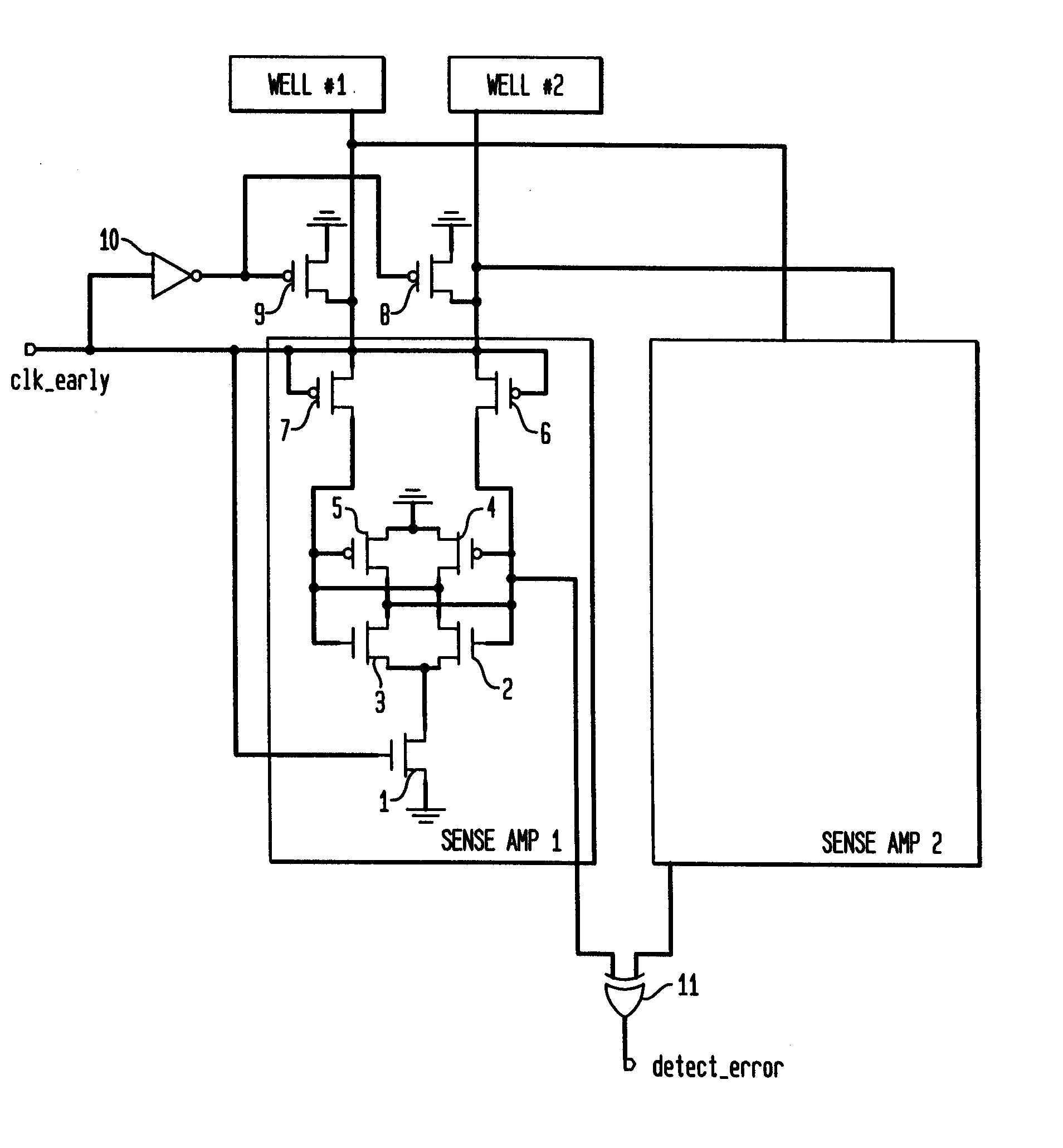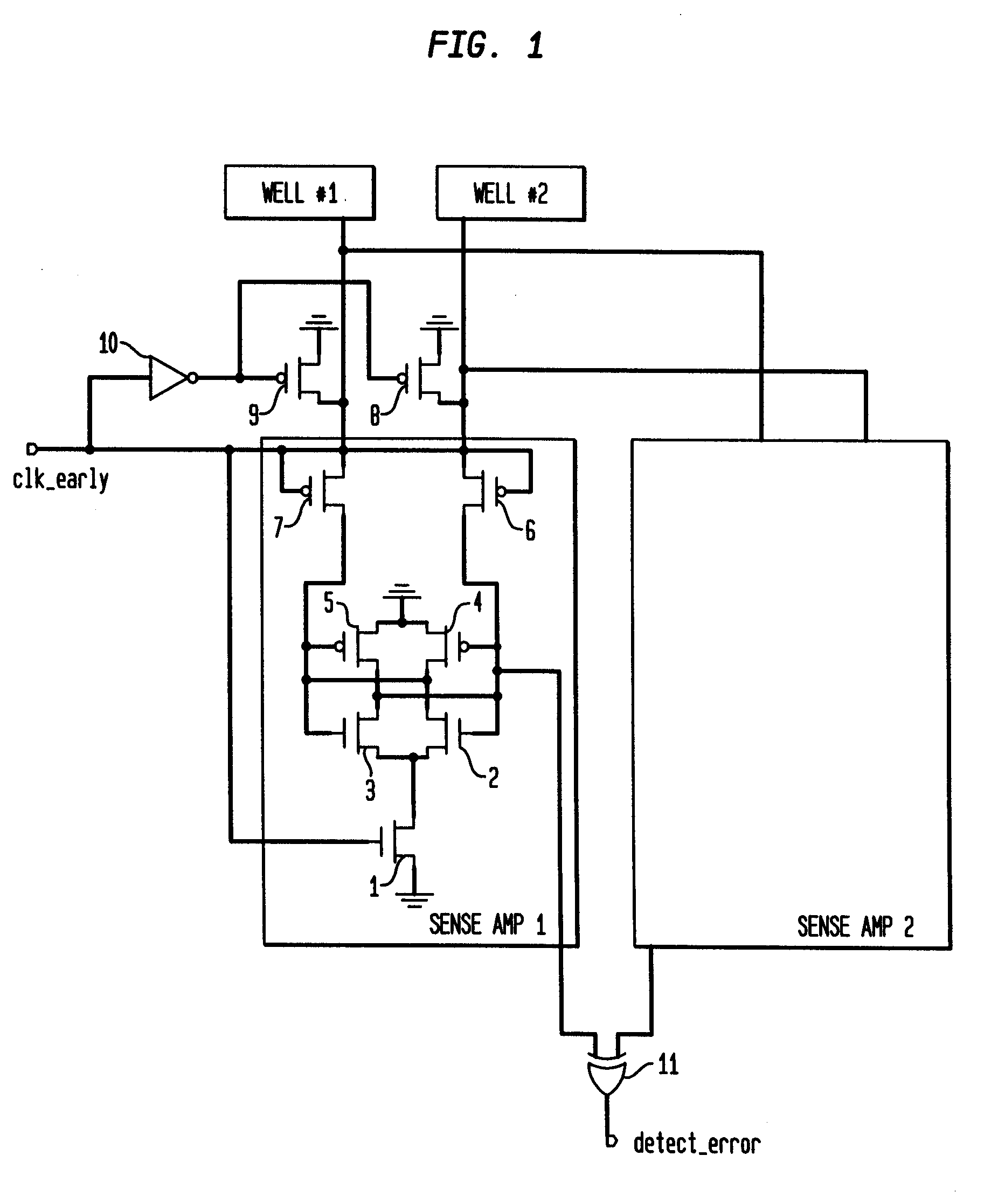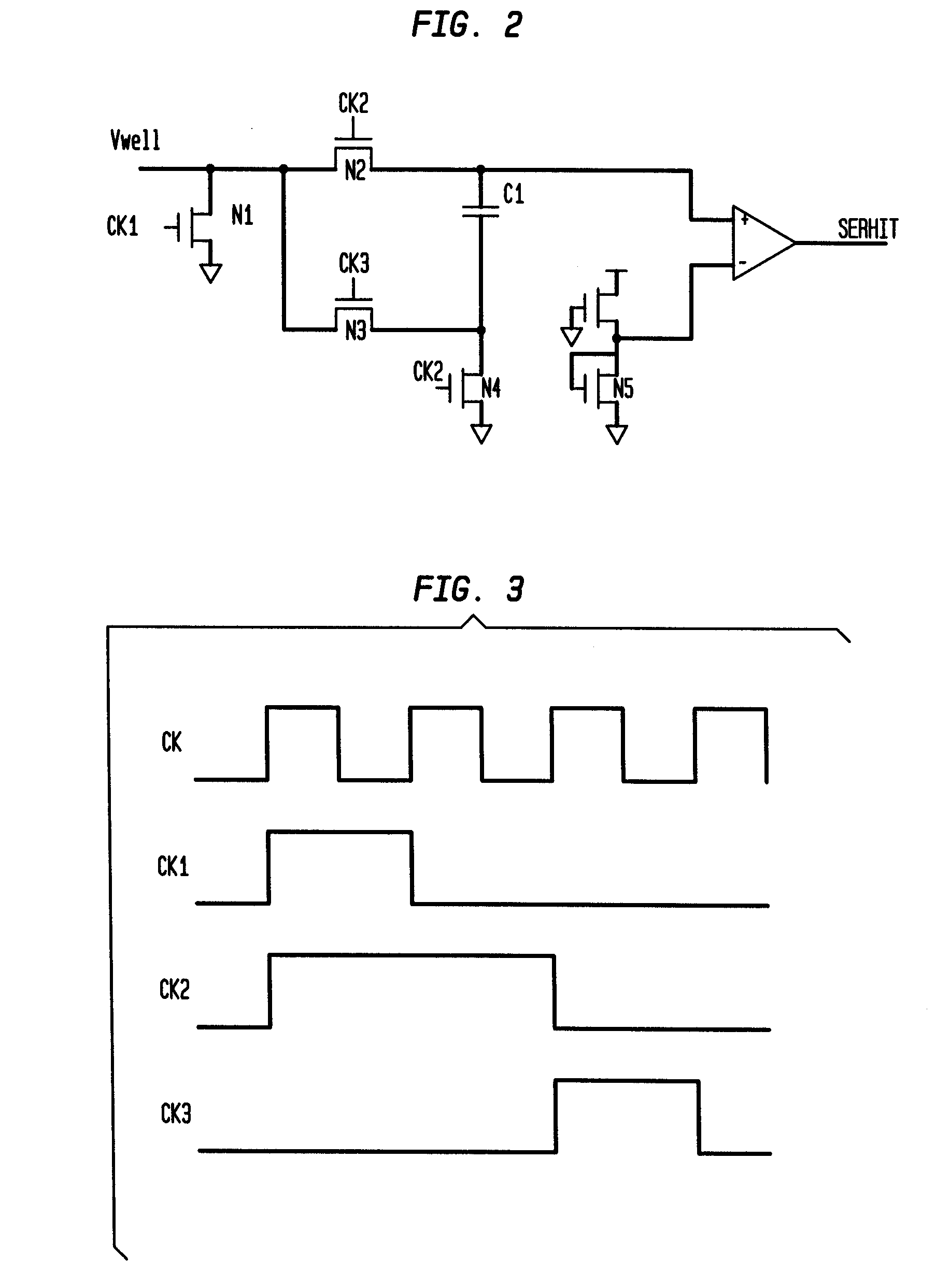Detector for alpha particle or cosmic ray
- Summary
- Abstract
- Description
- Claims
- Application Information
AI Technical Summary
Benefits of technology
Problems solved by technology
Method used
Image
Examples
first embodiment
[0015]FIG. 1 illustrates a detector circuit pursuant to the present invention for detecting an SER event (alpha particle or cosmic ray strike) of a first silicon P well 1 or a second silicon P well 2, by differentially detecting the floating voltages of the first and second silicon wells during periods of non-operation of the circuits fabricated in the first and second silicon wells. Each of the silicon P wells 1 and 2 is connected to two Sense Amps (SA) 1 and 2 which are substantially identical, with FIG. 1 only illustrating the circuit details of Sense Amp 1. A single Sense Amp is able to detect that one of the two wells 1 and 2 incurred an SER event, but would not be able to detect which one of the two wells 1 and 2 incurred the SER event. Two Sense Amps 1 and 2 are provided to be able to detect which one of the two wells 1 and 2 incurred the SER event, as explained below.
[0016] The silicon wells 1 and 2 are connected to their bias power supplies through respective feeder devices...
second embodiment
[0027]FIG. 2 illustrates the present invention in which a detector circuit monitors a single silicon well in a silicon substrate for an SER event by monitoring the background voltage level of the single silicon well over a period of time. In this embodiment, the silicon well voltage Vwell during a first sampling period of time is compared with the silicon well voltage Vwell over a second sampling period of time to detect a deviation in the silicon well voltage which is indicative of an SER event. The circuit of FIG. 2 is a capacitive sensing detector circuit which takes a correlated double sampling of the background voltage level of the Vwell node voltage to allow offset cancellation of base leakage current and noise current injection of the Vwell node.
[0028]FIG. 3 illustrates timing diagrams for the clock control signals for the circuit of FIG. 2. In the circuit of FIG. 2 the sampled well node voltage Vwell is input to a first device N1 coupled between Vwell and ground and controll...
PUM
 Login to View More
Login to View More Abstract
Description
Claims
Application Information
 Login to View More
Login to View More - R&D
- Intellectual Property
- Life Sciences
- Materials
- Tech Scout
- Unparalleled Data Quality
- Higher Quality Content
- 60% Fewer Hallucinations
Browse by: Latest US Patents, China's latest patents, Technical Efficacy Thesaurus, Application Domain, Technology Topic, Popular Technical Reports.
© 2025 PatSnap. All rights reserved.Legal|Privacy policy|Modern Slavery Act Transparency Statement|Sitemap|About US| Contact US: help@patsnap.com



